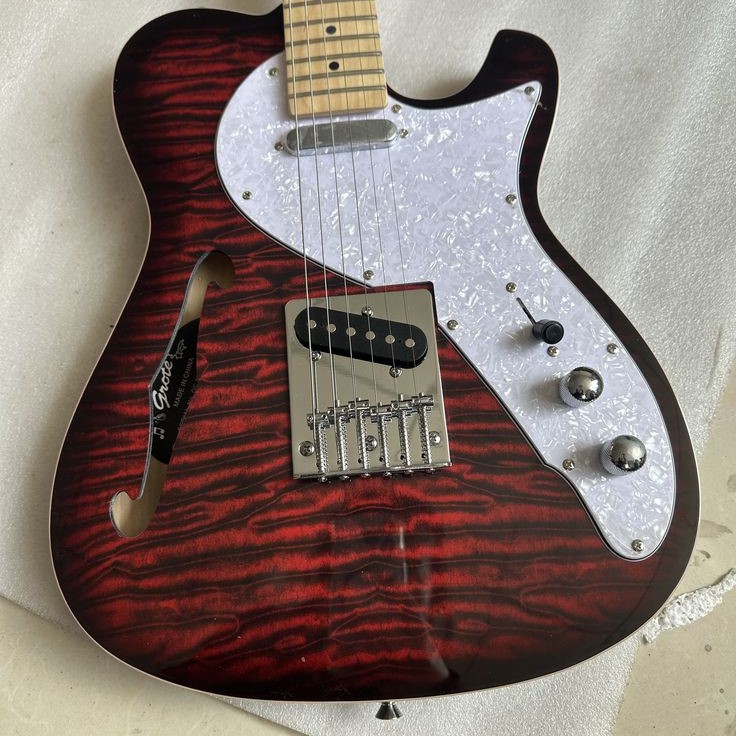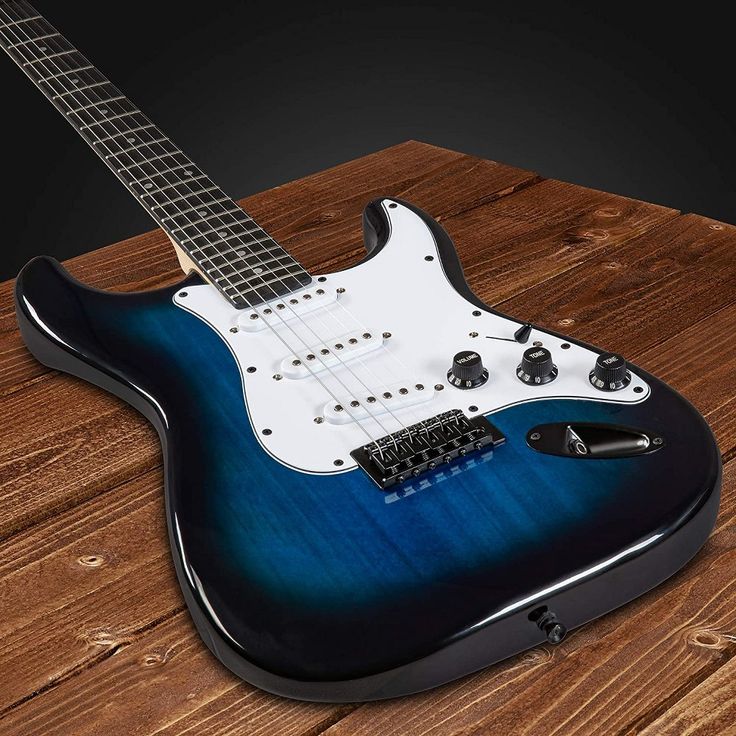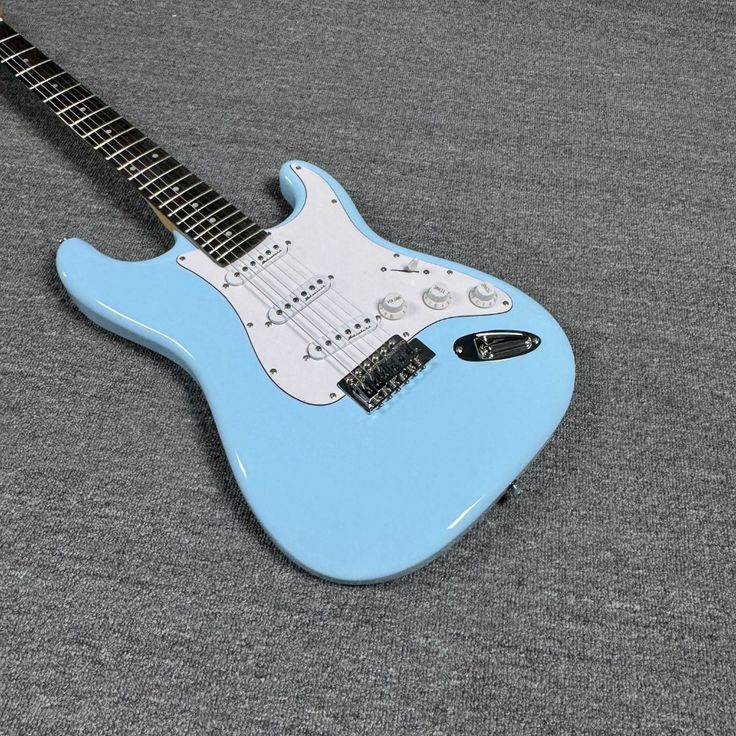The Definition of Percussion Instruments
Is a guitar a percussion instrument? To understand if a guitar falls under the category of percussion instruments, one must first grasp what percussion entails. Percussion instruments make sounds through being struck, shaken, or scraped. Normally, they create rhythm and are vital in music for keeping time. Examples are drums, cymbals, and xylophones. These instruments typically have a resonating surface that vibrates to produce sound when hit.

Percussion instruments fall into two main categories: pitched and unpitched. Pitched percussion, like timpani or marimba, can play different musical notes. Unpitched percussion, such as snare drums or tambourines, focus on rhythm rather than melody.
Percussion plays a fundamental role in various music styles ranging from symphonic bands to rock groups. They often form the backbone of a musical ensemble, offering a beat for other instruments to follow.
The confusion regarding whether a guitar is a percussion instrument arises because it doesn’t strictly conform to the attributes of traditional percussion. However, guitars can sometimes blur the lines due to innovative playing techniques. It’s these techniques that lead to debates among musicians and enthusiasts alike on the guitar’s classification.
The Guitar: An Overview of Its Characteristics
To gauge if a guitar is a percussion instrument, we must examine its characteristics. Guitars typically have a body, neck, and strings that produce sound when plucked or strummed. Sound occurs when vibrations from the strings resonate within the body of the guitar. This resonance amplifies the sound, which we perceive as music.
The guitar is foremost a stringed instrument, grouped with others like violins and pianos. They stand out for their ability to produce melody and harmony. Unlike most percussion instruments, guitars allow for a wide range of pitches. This is because of their fretted necks, where pressing down on different frets changes the pitch.
Guitars come in various forms, from the classical acoustic to the modern electric. Each type offers a distinct sound. Acoustic guitars rely on their hollow bodies for sound amplification. Electric guitars, on the other hand, need external amplifiers to be heard.

The guitar is versatile. It fits into many musical genres, from rock and jazz to classical and folk. This versatility comes from its capability to create both rhythm and melody. While not primarily a percussion instrument, the guitar can serve a rhythmic function in a band or ensemble.
Despite this rhythmic possibility, guitars do not meet the typical characteristics of percussion instruments. They’re not struck or shaken in standard playing methods. The sound of a guitar comes from strings, not a resonating surface hit by mallets or hands. However, we will explore how the role of the guitar can shift with different playing techniques later in the blog.
How Instruments Are Categorized
When classifying instruments, we look at how they produce sound. There are several categories based on this. The primary ones include string, wind, brass, and percussion. Each group has distinct traits that define its members.
Strings, like guitars and violins, rely on vibrating strings. Winds, including flutes and clarinets, need air to vibrate within a tube. Brass instruments, such as trumpets, are similar to winds but specifically made of brass. Percussion instruments, like drums, generate sound when struck.
Another factor is whether the instrument can play pitches. Pitched instruments create tunable sounds. These can be melodies or chords. Unpitched ones produce a fixed sound. This quality is key in roles like keeping the rhythm.
Instrument categorization is not always clear-cut. Some instruments can cross boundaries. For example, the piano has strings but is often in the percussion group. This is due to its hammers striking the strings.
This complexity shows in the debate over whether a guitar is a percussion instrument. Guitars mainly produce melodic sounds. But they can create rhythmic sounds too. This dual ability makes classification challenging.
In the end, how an instrument is categorized depends on its primary way of producing sound. And, often, the context it’s used in. For guitars, their categorization leans towards strings. Yet, as we’ll see, their percussive potential cannot be ignored.
String vs. Percussion: The Guitar’s Place in Instrument Classification
Considering the ways instruments create sound, the guitar typically falls under the string category. This class of instruments relies on vibrating strings to produce musical notes. In contrast, percussion instruments generate sound mainly through striking, shaking, or scraping. While the guitar uses vibrating strings, its role in music often extends beyond mere melody.
In bands and ensembles, guitars sometimes provide a rhythmic backdrop, akin to percussion. The guitarist can strum chords in a regular pattern, creating a beat for the music. This rhythmic play blurs the lines between string and percussion.

The key difference, however, lies in the guitar’s physicality. It is played by plucking or strumming strings, not by striking a resonant surface as percussionists do with their instruments. Even when playing rhythmically, the guitar’s sound originates from strings, defining it as a string instrument. That said, the question ‘Is a guitar a percussion instrument?’ holds some weight when considering percussive techniques.
These techniques involve tapping the guitar body or strings, simulating percussion-like sounds. Guitarists may use their hands to hit the guitar, bringing out a beat. Such methods showcase the guitar’s percussive potential, but they do not make it a percussion instrument by definition.
Thus, while the guitar may embody attributes of both string and percussion, it predominantly sits within the string instrument classification. Its primary sound-producing method aligns it closely with other stringed instruments, despite its versatility and the possibility of producing rhythmic, percussive effects.
The Role of Guitars in Different Music Genres
The guitar’s role extends across numerous music genres. Its broad appeal comes from its versatility. In rock, the electric guitar often takes center stage with powerful riffs and solos. This genre leverages the guitar’s ability to generate energetic and rhythmic sounds. When looking at blues, the guitar is more than an instrument; it’s a voice. It expresses emotion through bending notes and soulful vibrato. Jazz guitarists may opt for complex chords and intricate melodies. They often play both rhythm and lead roles within a band.
In country music, the acoustic guitar is a staple. It provides both a rhythmic foundation and melodic twangy leads. Folk music favors the guitar for storytelling. The strumming accompanies vocals, creating a narrative rhythm. Classical genre shows another side of the guitar. Here, it’s played with precision and often showcases complex fingerstyle techniques.
Each of these genres uses the guitar differently. It adapts, serving as a melodic, harmonic, and at times, percussive element. The guitar’s diversity raises the question, ‘Is a guitar a percussion instrument?’ While not traditionally so, in certain styles, the percussive dimension of guitar playing is pronounced. This includes tapping and slapping techniques that mimic drums or other rhythmic instruments.

Ultimately, a guitar’s classification may be rooted in its strings. But its role in music is far more dynamic. It can mirror the functions of a percussion instrument while maintaining its identity as a stringed instrument. This duality is key to the guitar’s enduring popularity in various musical contexts.
Percussive Guitar Playing Techniques
While a guitar is generally categorized as a string instrument, certain techniques showcase its percussive capabilities. These techniques involve the player producing sounds by hitting the strings or the body of the guitar with their hands, simulating the beats and rhythms characteristic of percussion instruments. Let’s explore some of these methods:
- Tapping: This involves using the fingers to tap the strings on the fretboard, creating a rhythmic sound.
- Slapping: Guitarists can slap the strings with their thumb, much like a bass player might, resulting in a percussive thump.
- Body Percussion: Striking the guitar’s body can produce various percussive sounds, mimicking drums or other hand-struck instruments.
- Muting Techniques: By resting the palm or other parts of the hand on the strings while playing, guitarists can create a muffled, percussive effect.
These techniques are not limited to one genre. They can be heard in acoustic and flamenco styles, where the rhythmic component is essential. Electric guitarists in rock or funk bands also employ percussive methods to add depth to their music.
These playing styles expand the guitar’s function, allowing it to not only provide melody and harmony but also add rhythm to the musical composition. Despite these techniques, the guitar doesn’t become a percussion instrument by definition. It remains, at its core, a stringed instrument capable of employing percussive elements to enhance its musical scope.
The Evolution of the Guitar and Its Impact on Classification
The guitar has evolved over centuries, impacting its place in instrument classification. Originating from early string instruments, it has grown into a versatile tool in the hands of musicians. With advancements from the classical versions to electric models, the guitar’s sound and techniques have expanded greatly. This change influences how we view its role across music genres.
Early guitars were primarily used for melody and harmony. They had a clear classification as string instruments. Over time, innovative guitarists developed new playing methods that highlighted its rhythmic capabilities. These methods brought a percussive element to the instrument, causing some to question, ‘Is a guitar a percussion instrument?’
The introduction of the electric guitar marked a significant shift. It allowed for a broad range of sounds, including those with a percussive quality. The amplifier and effects units enabled guitarists to modify the guitar’s sound, including adding sustained beats that resemble percussion.
Today’s guitar techniques often blur the lines between string and percussion. The body can be used as a drum, and strings can be tapped to create beats. These methods showcase the guitar’s adaptability and hint at a dual classification. Yet, despite these percussive attributes, guitars mainly continue to be classified as string instruments due to their standard method of sound production.
In summary, the evolution of the guitar has presented a reason to reevaluate its classification. While it retains its heritage as a stringed instrument, its foray into the realm of percussion cannot be ignored. The guitar’s adaptability and evolution highlight the complexity of instrument classification in modern music.

Comparing Guitars to Traditional Percussion Instruments
When evaluating if a guitar is a percussion instrument, it’s useful to compare it to traditional percussion tools. Percussion instruments like drums, cymbals, and tambourines share common traits. They all produce sounds when struck, shaken, or scraped. They also mainly contribute to the rhythm of a piece, rather than the melody.
Guitars, however, differ in several ways:
- Sound Production: Guitars generate sound through vibrating strings. In contrast, percussion sounds come from hitting or shaking.
- Pitch Variation: Guitars can vary pitches; playing different notes on the fretboard. Percussion usually has more limited pitch abilities.
- Playing Technique: Guitars are plucked or strummed, which is unlike the striking motion used in percussion.
- Role in Music: While guitars can provide rhythm, they primarily offer melody and harmony in music. Traditional percussion doesn’t often handle these elements.
Despite these differences, guitarists can utilize percussive techniques such as tapping or slapping. These styles mimic the rhythmic aspect of percussion instruments. But this does not make the guitar a traditional percussion tool.
The guitar’s ability to mimic certain percussion qualities showcases its versatility. Yet, its primary function as a provider of melody and harmony solidifies its position as a string instrument. This distinct identity keeps it separate from the percussion classification.
In conclusion, while the guitar has percussive elements, it remains distinct from traditional percussion instruments. Its strings, variety of pitches, and primary melodic role define its unique place in music. This makes it clear that a guitar, despite its versatility, is not a percussion instrument by standard definitions.
Final Thoughts: Understanding Instrument Classifications
Is a guitar a percussion instrument? The distinction is essential for appreciating the nature of musical instruments and understanding how they contribute differently to musical expressions.
By recognizing how guitars fit into the broader landscape of instrument classification, musicians and listeners alike can deepen their appreciation for their unique qualities. Whether your preference lies with strings, percussion, or a mix of both, understanding these nuances enhances overall musical experience.
As you explore your own musical journey, remember that each instrument holds its unique beauty and function. The guitar, with its stringed elegance and rhythmic possibilities, will always occupy a cherished place in the world of music.